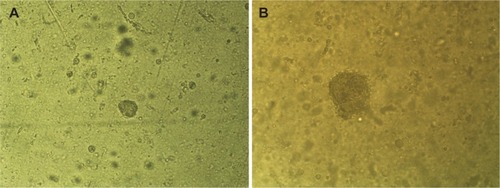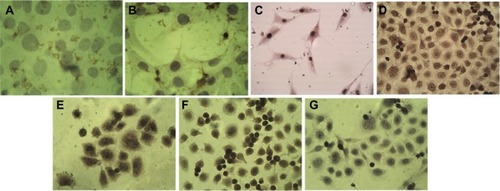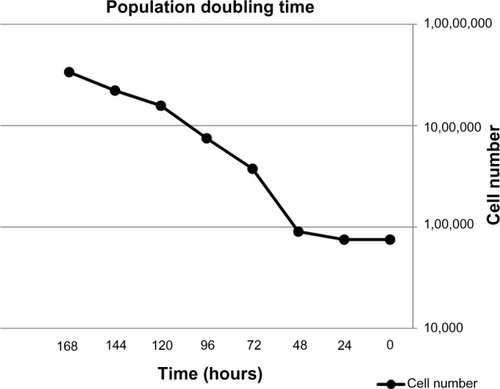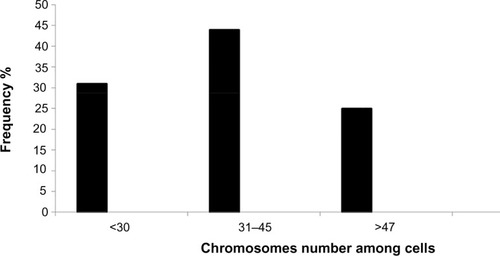Figures & data
Figure 1 Histopathological sections of the original tumor of which the AMJ13 cell line was derived from.

Figure 2 AMJ13 cell line morphology.

Figure 4 AMJ13 cells growing in an anchorage-independent fashion using soft agar colony assays.

Figure 5 Analysis of Karyotype.

Figure 6 Chromosome numbers differ between cells.

Figure 8 Immunocytochemistry analysis of AMJ13 cell line.



